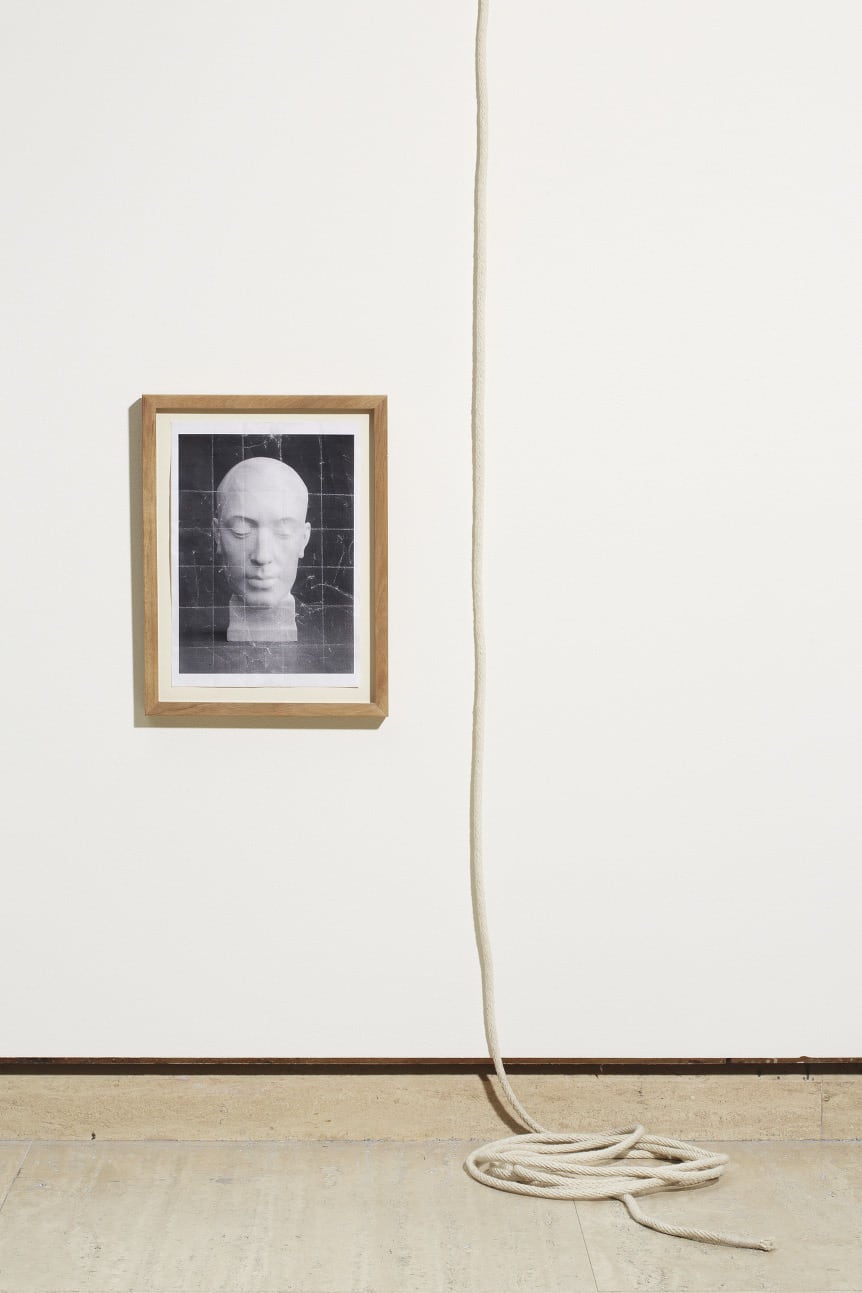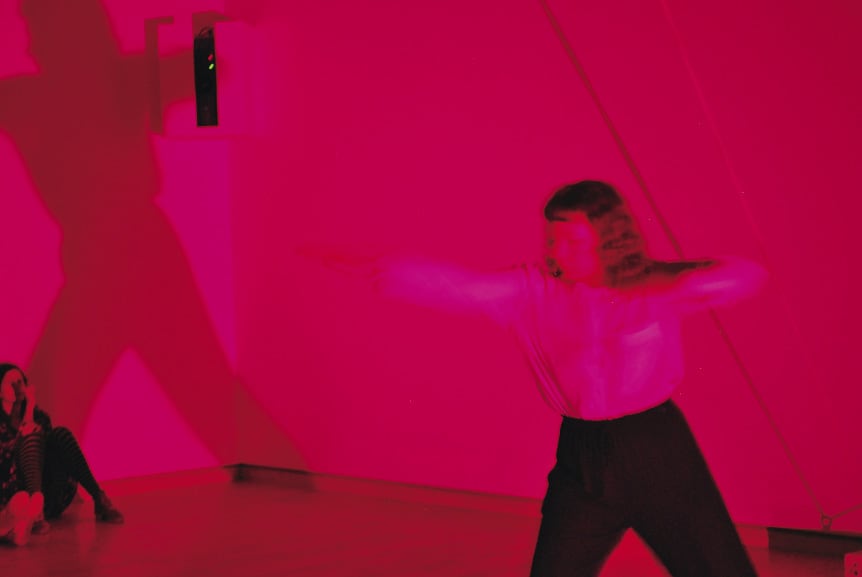
Taking Form, a recent exhibition in the contemporary Project Space at the Art Gallery of New South Wales (AGNSW), presented six new works by Agatha Gothe-Snape and Sriwhana Spong, meditating the intersections between dance, choreography and language. Curated by Anneke Jaspers, the exhibition established a dialogue between the past and the present, exploring traces of movement and live action through sculpture, installation, painting, text and performance.
Gothe-Snape’s Inexhaustible Present was a movement-based reinterpretation of fragments of the AGNSW’s permanent collection, developed in collaboration with dancer and choreographer Brooke Stamp. Existing as filmic documentation of Gothe-Snape’s dancing shadow, the work was accompanied by an enigmatic, text-based movement score for the shadow performance (Final Score 2013). The large scale of Sriwhana Spong’s The Stranger’s House sharply delineated the space and her representation of Sidney Nolan’s unrealised set design for a production of Icare became a theatrical backdrop framing the viewer and surrounding works.
Both artists’ work concerns ephemeral processes and traces, memory and presence. These thematic threads blur the distinctions between the artists’ individual practices, resulting in a layered exhibition that offered multiple entry points for engagement, consolidating what could have been a fragmented exhibition. The strength of Taking Form became apparent through the subtle reiteration of themes across multiple works. This had the effect of bringing awareness to my own movement and presence in the space as I negotiated the manifold traces of the artists’ bodily presence.
The AGNSW’s Project Space is situated within the contemporary galleries and dedicated to solo exhibitions of living artists and ‘current ideas and material developments’.1 In this context, Spong and Gothe-Snape drew from the physical site of AGNSW, its architecture and the surrounding gardens, and exhibiting in the context of a major public art collection.
The material traces of Spong and Gothe-Snape’s amorphous, performative gestures illustrated how documenting, recording or remembering ephemera has its own validity in an object-centered arts environment. Temporal work generally exists in the public art collection as residual traces or documentation—Gothe-Snape’s performative re-interpretation placed the embodied artist into the communal histories and ‘public memories’ housed within the AGNSW.
Taking Form presented various scores as visual cues for performativity and, in doing so, explored the relationship between language and choreography. The works sought out a language for movement, whilst embracing a fluidity of mediums, references and histories. Spong’s Rocks in the Sky is a seven-part series of framed instructions, transcripts and annotative documents that employs written language to talk about the body in motion. These semiotic expressions inspire a quiet bodily awareness, their direct voice choreographing inhalations and exhalations, instilling in me a subtle feeling of weightlessness and awareness. This notion of the active embodiment of the viewer was extended into Gothe-Snape’s Inexhaustible Present, as the light from the projector cast the viewer’s shadow onto her screens, alongside the artist’s own shadow. As a viewer, it made me feel transformed into participant, an active presence against Gothe-Snape’s ghostly silhouette.

The layering of works resulted in a dialogue between stillness and movement. Spong’s flicks of marble and air drying clay (Hair, Pastry, Tobacco 2013) were like accents and inflections transcribed on the gallery’s white walls, cryptic flourishes embalmed by the solidity and permanence of the material. The intense movement in the brushstrokes of The Stranger’s House reproduced—or re-performed—Nolan’s handiwork on a large scale, elucidating the visceral process of painting. Spong revives Nolan’s study to a new scale, anachronistically retracing his marks across the entire wall of the gallery, bringing his forgotten set design for Icare into the present. If Spong’s works emphasised perpetual movement, Gothe-Snape’s existed in tension between stillness and action. The taut suspension of facing screens with ropes and pulleys and the moments of stillness found in her repeated choreography were offset by a reflective gold plaque stating with deliberate permanency the dates of the artist’s two live performances, which functioned as both preface and epilogue to the exhibition.
Jasper’s decision to include two artists in Taking Form set a precedent of dialogue for her curatorial investigation. Although created independently, Gothe-Snape and Spong’s harmonious works used similar methods of appropriation, language and gesture to trace performance modes in the museum space.
Amelia Wallin is an independent curator, writer and organiser based in Sydney.
Note
